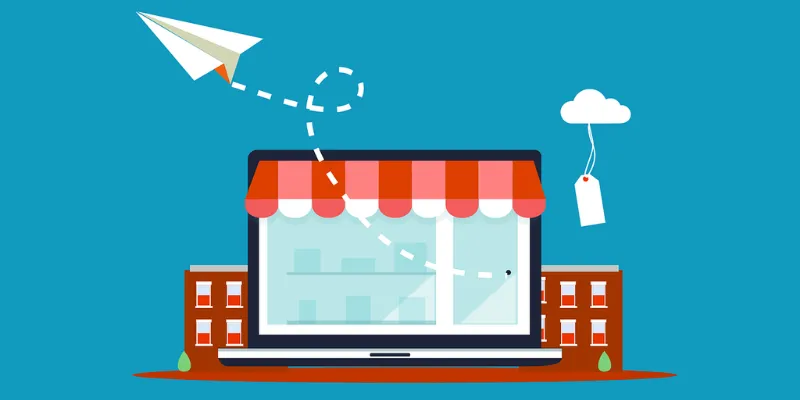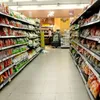Why D2C brands are eyeing the offline path after tapping online channels
After reaching out directly to consumers amid the pandemic, D2C brands are eyeing a phygital approach. The idea is to build an offline presence to increase penetration and volumes, reduce customer acquisition costs, and grow sales.
The COVID-19 pandemic accelerated the adoption of ecommerce, leading to a growth surge for direct to consumer (D2C) brands.
For the last year and a half, D2C brands — which focus on consumer feedback, R&D, and varied business models to launch niche products — have tapped the growing opportunity offered by customers seeking safety and convenience.
Mumbai-based beauty brand Sugar Cosmetics, which had a 60 percent retail presence and 40 percent sales coming from digital channels till March 2020, completely change its strategy amid the pandemic. The brand started focusing on the digital fronts and slowed down retail expansion.
“Our store sales girls started using WhatsApp to sell our products in the very initial phase of the pandemic,” Vineeta Singh, CEO and Co-founder, Sugar Cosmetics, told YourStory.

Vineeta Singh, CEO and Co-founder, SUGAR Cosmetics
Tanmoy Mukherjee, who had earlier co-founded beer brand Bira, launched snacks venture Forbidden Foods in 2018. He planned to sell a range of popped chips BRB through retail channels. But when stores shut down, Tanmoy started selling through online marketplaces, including Amazon.
Many digital-first brands, including plant-based nutrition brand Oziva and three-year-old niche skincare brand Dot and Key, thrived during this time as more people started shopping online, leading to brand discovery.
According to Statista, India has 190 million online shoppers, up from 110 million in 2018. And while D2C brands may have benefited from going online, they are now thinking anew.
The phygital way
Many brands today are looking to adopt a hybrid model — selling offline along with online channels. A few of them are looking to expand their retail presence or venture into the space for the first time in a big way.
Sugar Cosmetics, which earned a total revenue of Rs 100 crore in FY20, plans to expand its retail presence. So does Oziva, which currently has a presence across 350 stores from 150 stores only two months ago.
“In India, majority of the population still shops through physical stores. Online is a great channel for sales, especially now as more people are shopping online. But selling through retail has its own benefits and scaling the brand becomes easier,” says Archana Jahagirdar, Managing Partner, Rukam Capital.
The Delhi-based venture capital firm is backing D2C coffee brand Sleepy Owl (which is sold through both online and retail stores), ecofriendly products startup Beco, and foodtech firm Burger Singh, among others.
Similar sentiments were echoed by Kolkata-based Dot and Key’s founders, who want to sell beyond metro cities. The digital-first firm, which started by selling pre-swim creams, among other niche products, is expanding offline for the first time. The firm is focusing on niche products and targeting Tier II and III markets with reduced price points.
“Our products are niche and our price points are slightly less affordable for everyone. But we do want to increase our customer base and having a retail presence makes more sense for this,” Suyash Saraf, Co-founder, Dot and Key, told YourStory in June.
The firm is looking to enter 600 stores across 14 cities in the coming months.

Dot & Key's product range, which will soon be launched in smaller sizes
Why go offline?
Both channels have their own set of pros and cons. For instance, a brand opting for retail presence does need to pay commission to store owners for shelf spaces and provide inventory. But it does not have to pay separately for advertising, which needs to be done on digital channels.
“Having your store is in itself a good way to publicise your brand,” says Sugar Cosmetics' Vineeta.
When people see a brand store or spot a product in the shopping aisle of a supermarket, they will have “seen” your brand, even if they don’t end up buying your products. No separate impression-only ads need to be created or expensive online real estate needs to be purchased for brand discovery.
Forbidden Foods’ Tanmoy says volumes tend to increase offline even for non-established brands.
“People usually won’t buy a lot of products from a single brand online. The chances of bulk buying decrease if the brand is not very known. Physical stores have many walk-in customers. Even if everyone buys one packet of chips, I have sold a good volume in a day,” he says.
“On an online store, there is a commission to be paid to marketplaces and then the delivery itself is very cost-heavy,” he adds.

With the digital-first approach, brands need to create a strong website, which is not a big challenge anymore due to platforms like Shopify.
They need to be present across online marketplaces, which charge a commission of 20-30 percent, draw traffic through Instagram and Facebook ads, and then create the last-mile delivery channel.
Startups either partner with a delivery partner or create their own distribution channels. Perfecting this has been a challenge for many startups as order volumes can be low and delivery costs can be very high.
With some products, including clothing and footwear, brands also have to bear the cost if their products are returned.
Brands, selling only through digital channels, increase their volumes by skipping single products. They instead bundled deals on their website, put multiple products in one package or increase price points with bigger variants.
Vegan footwear brand CAI charges courier fees from customers, who wish to return or exchange their products. Such steps help in increasing volumes and reducing unnecessary returns.
Big business opportunity
India has more than 600 D2C brands, and a report by Avendus Capital estimates that the addressable market size for this industry will be $100 billion by 2025.
Top D2C brands such as boAt, Wow Skin Science, MCaffeine, and Wakefit are already profitable. Others are growing exponentially, including Licious, Wrogn, Mamaearth, and Mom's Co. Many others — NuttyGritties, Itsy Bitsy, Cosmix, and Captain Zack — are waiting in the wings to become big businesses.
Even investors are looking at these companies with increased interest. In 2021 alone, the D2C segment has seen more than 30 funding deals.
Ankur Bisen, Senior Vice President, Technopak Advisors, a Delhi-based business consulting firm, says, “D2C, which means reaching out directly to your consumer, can only be a starting point. But if a brand needs more growth, a multi-channel play is going to be essential.”
“FMCG brands like ITC and Marico have sales from their online channels growing every quarter. But that does not mean they have left their kiranas and other traditional channels behind. They are trying to improve in areas where they do not have a presence. Niche D2C startups also need to do the same,” he adds.
It does not seem like the need for retail shelves is going away anytime soon, necessitating new-age brands to take a phygital approach to scale volumes, sales, and business.
Edited by Teja Lele










